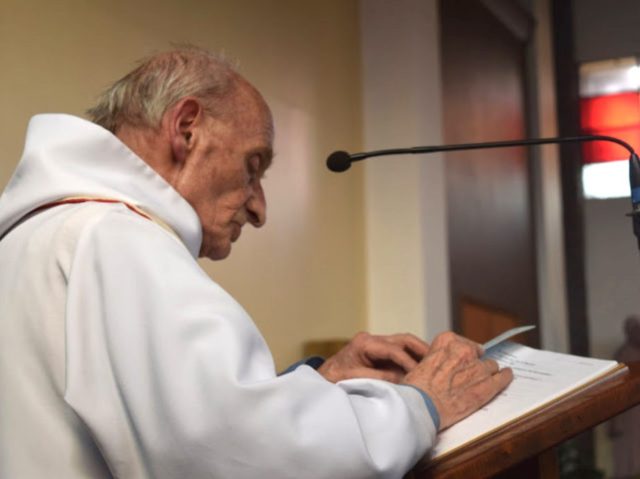This week, the French archbishop of Rouen led the first pilgrimage of the faithful to the tomb of martyred priest Father Jacques Hamel, coinciding with the anniversary of one of the greatest slaughters of Christians by Muslims in history.
On May 13, 2013, Pope Francis canonized the 813 “Martyrs of Otranto,” a large group of Christian shopkeepers and artisans in southern Italy who were beheaded, one by one, by a horde of Muslims from the Ottoman Empire 500 years ago.
The similarities between the massacre of Christians in Otranto on August 14, 1480, and the recent execution of Father Jacques Hamel in northern France go beyond dates on the calendar. As the Islamic invaders overran the city of Otranto, they made for the Catholic cathedral and slit the throat of Archbishop Stefano Pendinelli while he was celebrating Mass. Father Hamel, too, had his throat slit while celebrating Mass by the two young Islamic State militants Abdel Malik Petitjean and Adel Kermiche.
In fact, in an age when the “people of the cross” are slaughtered on the beaches on Libya and massacred in their churches, there are eerie similarities between the Islamic State and the Muslim militants that ravaged Christian populations down through the centuries.
The town of Otranto lies on the edge of the Adriatic Sea, and in the 15th century was a thriving center of commerce. Its estimated 6,000 inhabitants were made up of Christian families with a small garrison of 400 Aragonese soldiers for nominal protection.
After the fall of Constantinople in 1453, the Ottoman Turks set their sights on Italy, the heart of Christendom. Sultan Mehmet II the conqueror had taken the name Kayser-i Rûm (Caesar of Rome), one indication of his plan to ultimately conquer the Eternal City — much as ISIS has sworn it will do.
During the summer of 1480, the Sultan attacked Rhodes, held by the Knights of Malta and sent an even larger army to attack southern Italy. On July 29, 1480, the inhabitants of Otranto watched in horror as a fleet comprising 18,000 Muslim troops entered their harbor.
After the execution of the archbishop, the Turks rounded up the frightened townspeople and brought before the commander of the Ottoman forces Gedik Ahmed Pasha. They abused the women and children, then chained them and prepared them for transport as slaves.
As the men watched powerlessly, their captors offered them one possibility of saving their wives, children, sisters, and mothers: they would have to convert to Islam.
Although there was no longer an archbishop to rally them, these shoemakers and leather tanners and apprentices knew what they had to do. One man, Antonio Primaldo, a local tailor, stood up and said: “Now it is time for us to fight to save our souls for the Lord. And since he died on the cross for us, it is fitting that we should die for him.”
On August 14, the Turks led all the laymen of Otranto from the age of 15 upwards to the Hill of Minerva outside the town. There, the Muslims beheaded the 813 men one by one, starting with Antonio Primaldo. After that day, the Hill of Minerva became known as the Hill of the Martyrs.
As the French people gather at the tomb of Father Jacques Hamel to pray for France, they should know that he was not alone in suffering execution for the name of Jesus.
Five centuries ago, 813 martyrs suffered the same fate at the hands of an Islamic host anxious to convert the whole world by the sword.
Plus ça change, plus c’est la même chose…
Follow Thomas D. Williams on Twitter Follow @tdwilliamsrome.

COMMENTS
Please let us know if you're having issues with commenting.